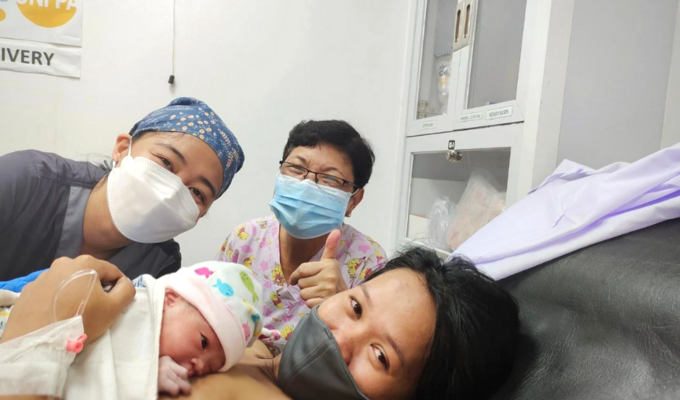In Philippines, CERF supports safe births after the typhoon
Philippines | 2023 | CERF
Philippines, Southern Leyte. When Typhoon Odette (international name: Rai) struck the Philippines in December 2021, it left a trail of destruction, leaving thousands of families homeless and many government and health facilities damaged or destroyed by strong winds and landslides.
The rural health unit serving Himbangan village in St. Bernard, Southern Leyte town was among those heavily damaged.
Women’s Health on Wheels (WHoW) was ready. Funded by CERF and other donors, WHoW is a mobile birthing facility that provides on site maternal and reproductive health care for women during emergencies.
Midwife Edna Tumandao traveled from the neighboring province of Eastern Samar to help. Her province was not as badly hit by Typhoon Odette so their governor decided to send them on a “solidarity mission” to Southern Leyte.
“During Super-typhoon Yolanda (international name: Haiyan), other provinces helped us. In return, our provincial health officer and governor wanted to give back, which was why they sent us,” she explains.
The WhoW facility reached hundreds of women in need. Edna explained, “It’s a very nice facility. It comes complete with air-conditioner, delivery table, waiting room, a bed and other facilities. It’s like a mini-hospital.”
Mariel was the first woman to give birth in the facility after Typhoon Odette. After the typhoon ruined her local clinic, she was scared for her baby’s safety. It was a relief to hear about the WHoW truck and its services.
By evening, her healthy baby daughter was delivered.
Original story: adapted from original articles by UNFPA Philippines.
